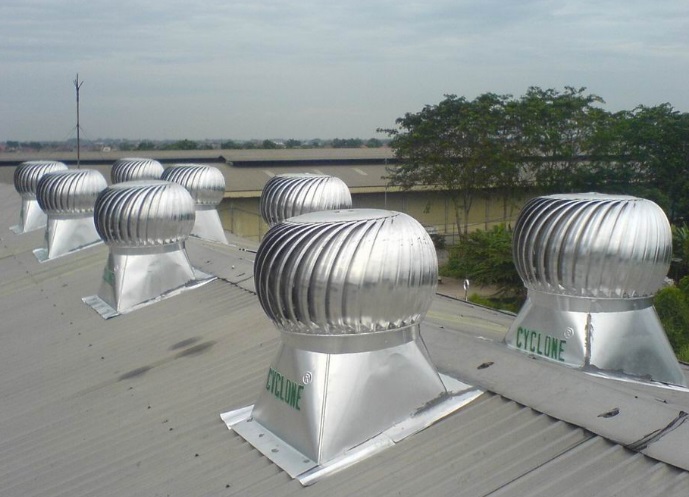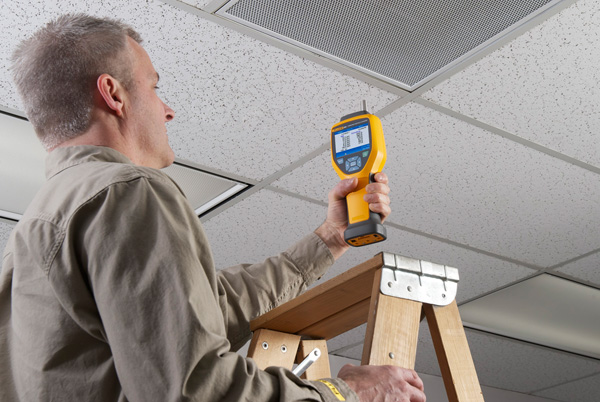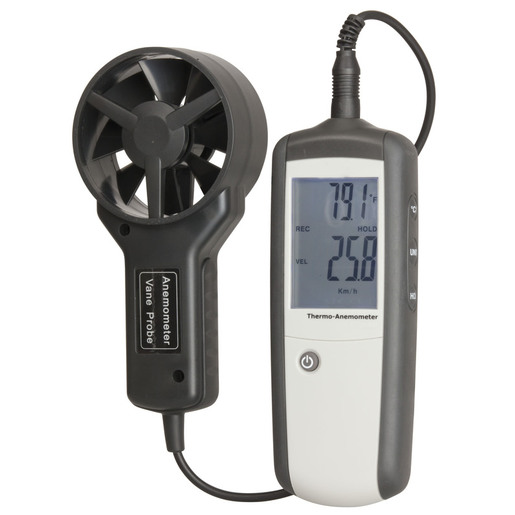Ventilation survey plays very vital role in understanding indoor quality in industries, homes, schools or offices and based on Ventilation survey reports steps can be taken to repair ventilation system.
Research shows that right indoor air quality improves productivity of employees. It reduces accidents, absenteeism and chemical exposure of employees resulting in improving profit for business.

In ventilation survey information is collected by building inspection, measurement of air exchange, pressure, carbon dioxide & particulate matter (PM10 & PM2.5) concentrations through main flow-paths of ventilation system.
What is Poor Ventilation?
Poor ventilation refers to a condition where the airflow within a space is insufficient or inadequate to maintain a healthy and comfortable indoor environment. It occurs when there is limited exchange of indoor and outdoor air, resulting in a buildup of pollutants, odors, moisture, and stagnant air.
Poor ventilation can occur in various settings, including residential, commercial, and public spaces.
The consequences of poor ventilation can have adverse effects on human health and well-being. It may result in respiratory issues, allergic reactions, fatigue, headaches, and poor concentration. In some cases, long-term exposure to poor ventilation conditions can lead to the development or exacerbation of respiratory conditions such as asthma.
Addressing poor ventilation often involves improving air exchange rates, optimizing airflow patterns, and implementing proper ventilation systems. This can be achieved through measures such as installing mechanical ventilation systems, using air purifiers, opening windows for natural ventilation, and ensuring regular maintenance of ventilation equipment. Proper ventilation is essential for maintaining a healthy and comfortable indoor environment, promoting good indoor air quality, and supporting the well-being of occupants.
Importance of Ventilation Survey
A ventilation survey is of utmost importance as it provides a comprehensive assessment of the ventilation systems in a given space, whether it’s a residential, commercial, or industrial setting. Such a survey helps identify any shortcomings or inefficiencies in the ventilation system, allowing for targeted improvements to be made.
Adequate ventilation is vital for maintaining a healthy indoor environment by ensuring the exchange of fresh air, controlling humidity levels, and removing pollutants. A ventilation survey helps determine if the existing ventilation system meets industry standards and regulatory requirements, safeguarding the health and well-being of occupants.
It also plays a crucial role in identifying potential risks, such as poor air quality, high levels of airborne contaminants, or insufficient airflow, enabling necessary remedial measures to be taken promptly. By conducting regular ventilation surveys, building owners and occupants can create a comfortable, safe, and healthy indoor environment.
What is a Ventilation Test?
A ventilation test is a process of assessing the effectiveness and efficiency of a building’s ventilation system. It involves various methods such as measuring airflow rates, air quality monitoring, and pressure differential measurements to ensure proper indoor air quality, occupant comfort, and compliance with regulatory standards.
Ventilation Survey Procedure
Natural ventilation through open window is effective strategy to maintain clean air and temperature in some portions of cooling season. To calculate energy saved in buildings through natural ventilation one has to calculate air flow.
Measurements of airflow needs to be taken from all underground facilities at times and places to:
- Ensure all places in industries, offices, schools or homes can receive their required airflows in an efficient and effective manner
- Verify ventilation plans are upto date and provide information for short and long term ventilation planning
- To identify the extent of air leakage, in case of any repair the same
- To identify locations where boosters fans are reuired
- To verify direction of airflow, quantities and separate identities of inlet and outlet are maintained
Also routine measurements of pressure measurement across doors maintained within limits and in correct direction.
Read more about Ventilation Survey Procedure.
Measurement of Air Exchange of Airflow
These are very common surveys and are conducted to check design of air flow reach to all sections of area. In this survey complaints are investigated in airflow or air conditioning and to upgrade Level, stope, isometric and escape maps. This survey provides information about the quantity of air is flowing through the selected area.
Intake and Exhaust Surveys
In this survey, measure focus is on how fresh air is distributed at work areas and how the exhaust is collected. Obviously, Fresh air should be distributed as per the work area requirement. Ideally, fresh air should reach where workers are working so that it can improve their efficiency.
Pressure Quantity Survey
Pressure quantity survey are conducted to provide information on branch resistance data for ventilation network and to identify bottlenecks in airflow. Barometric pressure is also measured in this survey to get information on air pressure in different areas. Normally pressures on doors, regulators and seals are measured to identify blockages.
Indoor Air Quality Surveys

Pressure-volume surveys are focused on distribution of airflow around ventilation system whereas Indoor air quality surveys plays major roles in ventilation surveys and are conducted to monitor harmful gases contamination such as Dust, i.e. Particulate matter (PM10, PM2.5), Heat, Humidity, Noise and Illumination in work area. As quality of air in offices and homes directly effects on health of individuals hence, this survey provides us valuable information about sources of indoor air quality pollution at workplace. Required action can be taken based on data received from Indoor air quality survey.
Equipment Surveys
In these surveys, all equipments related to ventilation system such as Primary and auxiliary fans, ductwork, services water systems and all air conditioning systems are checked if functioning properly. Ventilation equipment is too much expensive to operate inefficiently.
Ventilation Assessment
Ventilation assessment involves evaluating the effectiveness and efficiency of the ventilation systems in a specific environment. It aims to ensure that proper air exchange rates are maintained, providing a healthy and comfortable indoor environment. During a ventilation assessment, various factors are considered, including airflow rates, air quality parameters, and compliance with ventilation standards and regulations.
By conducting a thorough assessment, potential issues with ventilation can be identified and addressed, such as inadequate air circulation, poor air filtration, or improper distribution of fresh air. The findings from a ventilation assessment can guide improvements in ventilation design, operation, and maintenance, ultimately contributing to better indoor air quality and the well-being of occupants.
What is the Purpose of Ventilation in Industry?
The purpose of ventilation in the industry is to maintain a safe and healthy working environment for employees while optimizing industrial processes. Industrial ventilation involves the controlled movement of air to remove harmful contaminants, dust, fumes, and airborne particles from the workplace.
It helps prevent the buildup of hazardous substances, such as toxic gases or airborne chemicals, reducing the risk of occupational health issues and ensuring compliance with safety regulations.
Proper ventilation also aids in regulating temperature and humidity levels, promoting employee comfort and productivity. Additionally, efficient ventilation plays a crucial role in maintaining equipment performance and preventing overheating, condensation, and corrosion.
Overall, industrial ventilation is essential for safeguarding the well-being of workers, enhancing process efficiency, and minimizing potential risks in industrial settings.
Ventilation Survey Problems
Ventilation surveys can encounter several challenges during their execution. One common issue is the variability of building layouts, which can affect airflow patterns and make accurate assessments challenging. Additionally, limited access to certain areas, such as confined spaces or sealed rooms, can hinder thorough testing.
The presence of occupants during testing might also affect measurements, as their movements can disrupt airflow and alter air quality readings. Moreover, the complexity of ventilation systems and the need for specialized equipment can lead to logistical and technical difficulties, potentially impacting the accuracy and comprehensiveness of the survey results.
Ventilation Surveys and Services

Perfect Pollucon Services offers Ventilation surveys and services for our clients. These surveys are performed by our experts and experienced staff. We provide suggestions or recommendations to improve ventilation system after ventilation survey performance data. The evaluation of the Ventilation system in combination as per the ACGIH standards are performed under these surveys.
Mechanical Ventilation Test Service
A mechanical ventilation test service provides comprehensive assessments of ventilation systems in various settings. This service involves skilled technicians using specialized tools and methods to measure airflow rates, monitor air quality, assess pressure differentials, and ensure proper functionality of ventilation equipment. By conducting these tests, the service helps building owners, managers, and occupants ensure that the ventilation system operates efficiently, meets regulatory standards, and promotes a healthy indoor environment.
The results of these tests offer insights into necessary adjustments, maintenance requirements, and potential improvements to enhance air quality, occupant comfort, and overall system performance.
We use equipments such as Anemometer, Noise level monitor, Indoor air quality monitor, smoke tube while performing ventilation survey. Wind rose diagrams gives us more insights to wind speed and direction to improve ventilation.
Contact us now to avail these services.
A Major Objective of the Ventilation Survey is to collect data for determining the distribution of Airflow, Pressure and Air quantity throughout the main flow paths of the ventilation system along with calculating the resistance of the airways in the Ventilation network.
ASHRAE says that homes receive 0.35 air changes per hour but not less than 15 cubic feet of air per minute (cfm) per person.
The Ventilation Efficiency Quotient can be defined as the ratio of the total amount of air reaching the working faces to the total amount (volume in cubic feet per minute) of air handled by the fan.
There are many types of ventilations such as: Natural Ventilation, Mechanized ventilation, exhaust ventilation, supply ventilation, balanced ventilation, smoke ventilation, hybrid Ventilation etc.
Check if ventilation equipment is installed and working fine, check ventilation equipment filters regularly and clean them whenever required to keep them efficient, check the operation of a remote controller for ventilation equipment, and create an air passage by opening windows and entrance doors to ensure proper ventilation.
You may notice that your nose runs more frequently or that you get stopped up overnight. Itchy, watery eyes, sore throats and skin rashes can all result from inadequate fresh air. These symptoms can have other reasons, of course, which is why Perfect Pollucon Services recommends a professional inspection.
To check home ventilation you should take an indoor air quality test from a professional to get a detailed analysis of Home ventilation. You can do a few tests by yourself like checking air condensation on windows (lower the better), no signs of mould, exhaust fans in working condition and lastly good Humidity levels maintains indoors.
as per Safework, Harmful ventilation systems in the workplace create an atmosphere where minimal air movement results in the accumulation of contaminated air especially CO2, exposing workers to potentially hazardous conditions for the duration of their working day. They may then suffer the health effects beyond the workplace.
Ventilation is one of the most important parts of daily life at the workplace. Good ventilation will save energy, improve employee working efficiency and improve indoor air quality. Good Ventilation reduces air pollutants, expels CO2, draws fresh air from outside and controls temperature and humidity.
To test a ventilation system, a multi-faceted approach is employed. This involves measuring airflow rates at key points using tools like anemometers, assessing air quality through sensors monitoring CO2 levels and particulate matter, and conducting pressure differential checks to maintain proper room-to-room air balance. Additionally, techniques such as tracer gas testing and smoke testing are utilized to evaluate air distribution and flow patterns, ensuring that the system functions efficiently, providing adequate indoor air quality, and adhering to regulatory standards.
The purpose of a ventilation survey is to evaluate the performance and effectiveness of a building’s ventilation system. By collecting data on airflow rates, air quality, pressure differentials, and overall system functionality, the survey aims to ensure that the ventilation system provides optimal indoor air quality, occupant comfort, and complies with regulatory standards.
A ventilation certificate is an official document issued after a thorough assessment of a building’s ventilation system. It verifies that the system meets specified standards for indoor air quality, airflow rates, pressure differentials, and overall functionality, ensuring a healthy and comfortable environment for occupants.
Ventilation is done to maintain a healthy indoor environment by ensuring a constant exchange of indoor and outdoor air. It helps remove pollutants, control humidity, regulate temperature, and provide fresh oxygen, creating a comfortable and safe living or working space while minimizing the risk of airborne diseases and maintaining optimal indoor air quality.
“Maximum ventilation test” referring to a test to determine the maximum ventilation capacity of a system or space, it would involve measuring the highest achievable airflow rate using equipment like flow hoods or anemometers. This test helps ensure that the ventilation system can handle peak demands and maintain adequate air exchange rates during periods of high occupancy or pollutant generation.
Ventilation at home is typically achieved through a combination of natural and mechanical methods. Natural ventilation involves opening windows and using cross-ventilation to allow fresh outdoor air to circulate, while mechanical ventilation employs systems like exhaust fans, air purifiers, and HVAC systems to control airflow, remove pollutants, and maintain a comfortable indoor environment.
There are primarily two types of ventilation: natural ventilation and mechanical ventilation. Natural ventilation relies on passive airflow driven by temperature and pressure differences, while mechanical ventilation involves using fans, ducts, and other equipment to actively control and circulate air within a building.
Supply ventilation is a mechanical ventilation system that introduces fresh outdoor air into a building while exhausting an equal amount of indoor air. This method helps maintain positive pressure, ensures consistent airflow, and enhances indoor air quality by diluting pollutants and maintaining a comfortable environment.
Air Quality: Removing pollutants and replenishing oxygen for healthier indoor air.
Temperature Control: Regulating indoor temperature and preventing overheating.
Humidity Regulation: Managing moisture levels to prevent mold and discomfort.
Odor Control: Reducing unwanted odors by promoting air circulation.
Pathogen Dilution: Minimizing the spread of airborne diseases by exchanging indoor and outdoor air.
Ventilation is important for safety as it prevents the buildup of hazardous gases, controls fire and smoke spread, and maintains a safe and healthy indoor environment by reducing the concentration of pollutants and pathogens.
Ventilation in construction is vital for worker safety by minimizing exposure to dust, fumes, and other pollutants. It also aids in drying materials, preventing moisture-related damage and ensuring a healthier indoor environment post-construction.
CFM stands for “Cubic Feet per Minute,” and it is a unit of measurement used to quantify the volume of airflow in ventilation systems. CFM level indicates the rate at which air is moved or exchanged within a space, which is crucial for maintaining proper indoor air quality, temperature, and comfort.
Proper ventilation requires several key elements:
Airflow Pathways: Clearly defined paths for air to enter and exit the space, ensuring effective circulation.
Air Intake and Exhaust: Mechanisms for bringing in fresh outdoor air and expelling indoor air to maintain air exchange.
Air Filters: Filters to remove particulates and pollutants from the incoming air, ensuring better indoor air quality.
Airflow Control: Systems to regulate airflow rates and directions based on occupancy, season, and needs.
Monitoring and Maintenance: Regular checks, maintenance, and adjustments to ensure the ventilation system functions optimally over time.
Ventilation is essential in a diverse range of settings, including residential homes to ensure fresh air and prevent indoor pollutants, commercial spaces for occupant comfort, and healthcare facilities to control infection spread. It’s also crucial in industrial environments to remove harmful fumes and maintain worker safety, as well as in educational institutions, laboratories, and hospitality establishments to provide a healthy and pleasant indoor atmosphere. Additionally, transportation systems like airplanes and ships require ventilation for passenger well-being.
Sources:
http://web.mst.edu/~tien/218/survey.pdf
http://www.fsec.ucf.edu/en/publications/pdf/FSEC-CR-163-86.pdf
https://www.mvsengineering.com/files/Subsurface-Book/MVS-SVE_Chapter06.pdf

